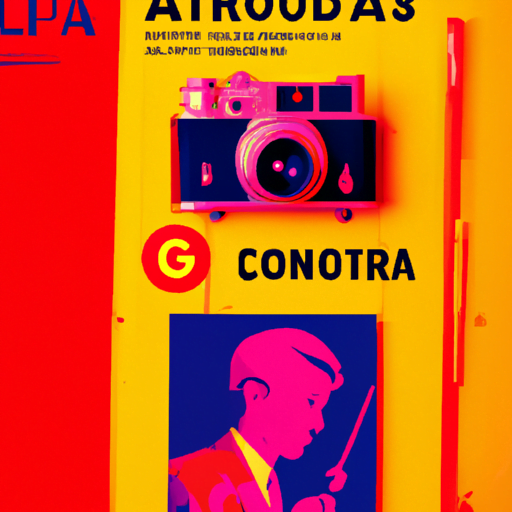-
Table of Contents
Nostalgia Marketing: Reviving Old Design Trends for Modern Campaigns
In today’s fast-paced and ever-changing world of marketing, brands are constantly seeking new ways to capture the attention and loyalty of consumers. One strategy that has gained significant traction in recent years is nostalgia marketing. By tapping into the power of nostalgia, brands are able to evoke positive emotions and create a sense of familiarity and connection with their target audience. In this article, we will explore the concept of nostalgia marketing and how it can be used to revive old design trends for modern campaigns.
What is Nostalgia Marketing?
Nostalgia marketing is a marketing strategy that leverages the emotional connection people have with the past to promote products or services. It involves using elements from the past, such as design trends, music, fashion, or pop culture references, to evoke feelings of nostalgia in consumers. By tapping into these emotions, brands can create a sense of familiarity and trust, making it easier to establish a connection with their target audience.
The Power of Nostalgia
Nostalgia is a powerful emotion that can have a profound impact on our thoughts, feelings, and behaviors. Research has shown that nostalgia can make people feel happier, more connected to others, and more willing to spend money. According to a study published in the Journal of Consumer Research, nostalgia can increase consumers’ willingness to pay for products and services by as much as 10%. This makes nostalgia marketing a highly effective strategy for brands looking to drive sales and build brand loyalty.
Reviving Old Design Trends
One of the key ways brands can leverage nostalgia marketing is by reviving old design trends. Design trends from the past can evoke strong feelings of nostalgia and create a sense of familiarity and comfort in consumers. By incorporating these design elements into their modern campaigns, brands can tap into the power of nostalgia and create a unique and memorable brand experience.
Examples of Nostalgia Marketing
Several brands have successfully used nostalgia marketing to revive old design trends and connect with their target audience. One notable example is Coca-Cola’s “Share a Coke” campaign. In this campaign, Coca-Cola replaced its logo on bottles and cans with popular names from the 80s and 90s. By doing so, Coca-Cola was able to tap into the nostalgia associated with personalization and create a sense of excitement and collectability among consumers.
Another example is the resurgence of retro video games. Brands like Nintendo have capitalized on the nostalgia for classic video games by releasing updated versions of their iconic consoles, such as the NES Classic Edition and the Super Nintendo Entertainment System (SNES) Classic Edition. These products not only appeal to older gamers who have fond memories of playing these games in their youth but also attract a new generation of gamers who are curious to experience the classics.
Benefits of Nostalgia Marketing
Nostalgia marketing offers several benefits for brands:
- Emotional connection: Nostalgia marketing allows brands to create a strong emotional connection with their target audience. By tapping into the positive emotions associated with the past, brands can foster a sense of trust and loyalty among consumers.
- Memorability: Nostalgic campaigns are often more memorable than traditional marketing campaigns. The emotional impact of nostalgia can make a brand stand out in a crowded marketplace and increase the likelihood of consumers remembering and engaging with the brand.
- Differentiation: Nostalgia marketing can help brands differentiate themselves from their competitors. By incorporating old design trends or references to popular culture from the past, brands can create a unique brand identity that sets them apart in the minds of consumers.
- Targeting specific demographics: Nostalgia marketing can be particularly effective in targeting specific demographics, such as millennials or baby boomers. These generations often have strong emotional connections to certain time periods or cultural phenomena, making them more receptive to nostalgic marketing campaigns.
Challenges of Nostalgia Marketing
While nostalgia marketing can be a powerful strategy, it also comes with its own set of challenges:
- Oversaturation: Nostalgia marketing has become increasingly popular in recent years, leading to a potential oversaturation of nostalgic campaigns. To stand out, brands need to find unique ways to tap into nostalgia and avoid being seen as just another brand jumping on the bandwagon.
- Relevance: Nostalgia marketing requires a deep understanding of the target audience and their nostalgic triggers. Brands need to ensure that the design trends or references they use are relevant and resonate with their target audience. Otherwise, the campaign may fall flat and fail to create the desired emotional connection.
- Authenticity: Consumers are becoming increasingly savvy and can quickly spot inauthentic attempts to capitalize on nostalgia. Brands need to be genuine and authentic in their approach to nostalgia marketing to avoid backlash and maintain the trust of their audience.
Conclusion
Nostalgia marketing is a powerful strategy that can help brands create an emotional connection with their target audience and drive sales. By reviving old design trends and incorporating elements from the past, brands can tap into the positive emotions associated with nostalgia and create a unique and memorable brand experience. However, it is important for brands to carefully consider their target audience, ensure relevance and authenticity, and find unique ways to stand out in an increasingly crowded marketplace. When done right, nostalgia marketing can be a highly effective tool for brands looking to capture the hearts and minds of consumers.
